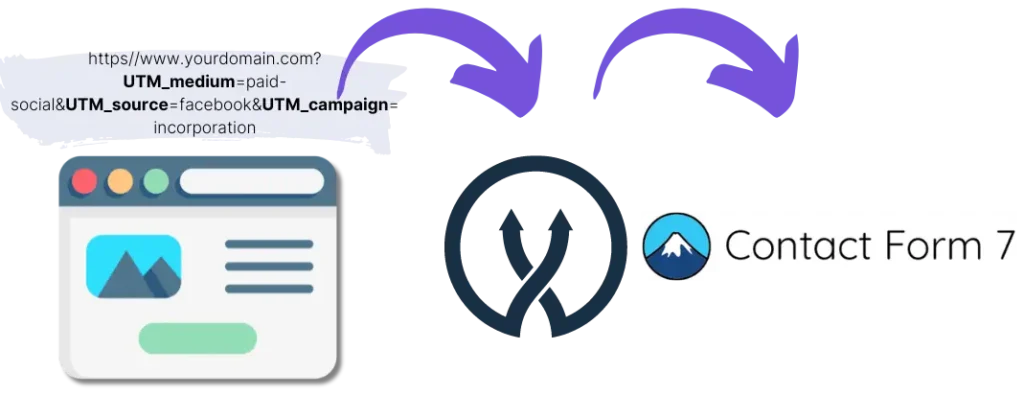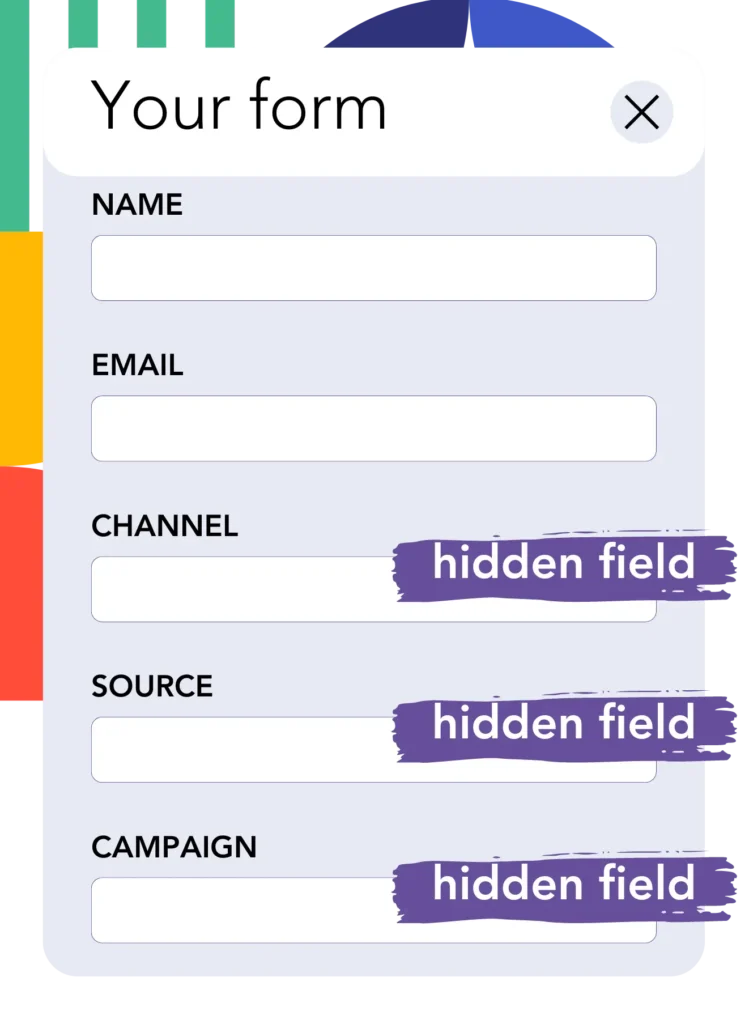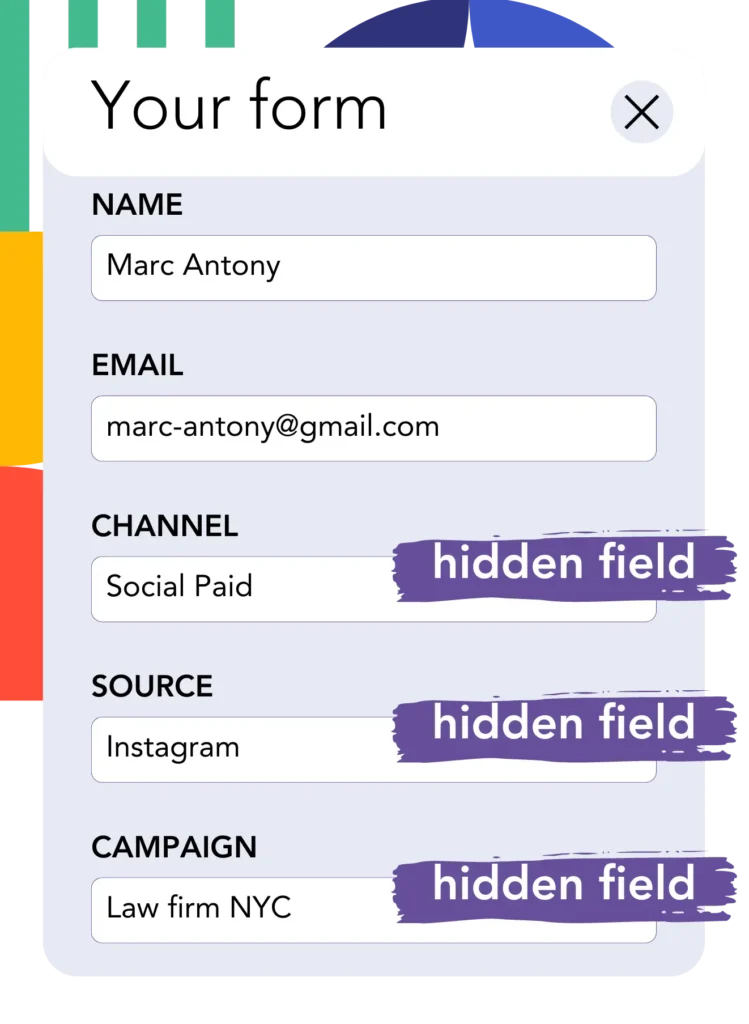Adding UTM tracking to Contact Form 7 can be challenging, especially for those without coding skills.
What if there was a solution to easily capture UTM parameters into Contact Form 7, without using any code?
Discover Leadsources.io!
Leadsources is a lead source tracking tool that acts as a middleman between your UTM parameters and Contact Form 7.

When a visitor clicks on your marketing campaign, Leadsources captures the UTM parameters from your URL.
Leadsources automatically inserts the UTM parameters into the hidden fields of your Contact Form 7.
You can view your UTM parameters and the lead’s information on the lead submission page of Contact Form 7.
In this guide, you will learn how to implement UTM tracking in Contact Form 7 in 10 minutes using Leadsources, without needing coding skills.
Implement Contact Form 7 UTM tracking in 4 easy steps
Step 1: Add Leadsources in the head tag of your website

Sign up to Leadsources.io, and benefit from our 14-day free trial.
Add the Leadsources code into the head tag of your website. No coding and no developers are required.
Simply follow the step-by-step guide we have created.
Step 2: Add the UTM parameters to your campaigns

Add the UTM parameters you want to track in all your campaigns (PPC, email, social media, etc.).
Leadsources works with any of the following UTM parameters:
- UTM_source
- UTM_campaign
- UTM_term
- UTM_content
Leadsources also captures information not contained in UTM parameters, such as the channel, landing page, and landing page subfolder.
Step 3: Add the hidden fields to your Contact Form 7

When your visitors fill out your Contact Form 7, they add personal data in the visible fields (name, email, etc.).
Meanwhile, Leadsources.io automatically inserts the UTM parameters into the hidden fields of your Contact Form 7 (channel, source, etc.).
To do this, add the hidden fields on Contact Form 7 that will store your UTM parameters.
Our detailed guide explains this step in great detail.
Step 4: Track the UTM parameters in Contact Form 7

When someone clicks on your campaign and lands on your website, Leadsources captures the UTM parameters from your URL.
The visitor opens your Contact Form 7 form and starts filling it out.
Leadsources inserts the UTM parameters into the hidden fields of your Contact Form 7 form. These fields are not visible to the visitor.
Upon form submission, the UTM parameters and the form’s responses are submitted together. You can find all this information on the submission page of Contact Form 7.
How does Leadsources work?
By adding the Leadsources code in the head tag of your website, Leadsources reads and captures the UTM parameters in your URL every time someone lands on your site.
It then stores the UTM parameters in the hidden fields of your Contact Form 7.
If a visitor enters your site without clicking on a link containing UTM parameters, Leadsources still captures data about the visitor using the referrer:
- Channel
- Source
- Campaign
- Landing page
- Landing page subfolder
In that way, you can track important lead source data, even when you can’t (or don’t want to) use UTM parameters, such as:
- On Google Search
- On your Instagram bio link
- On your social media posts
While most tools can only track the source of your leads using UTM parameters, Leadsources allows you to track lead sources regardless of their origin:
- Organic Search
- Paid Search
- Organic Social
- Paid Social
- Referral
- Affiliate
- Display Advertising
- Direct Traffic
This helps you collect clean lead source data in one place.
Pro tip:
LeadSources integrates with all the popular online form builders, including Cognito Forms, Gravity Forms, Jotform, Typeform, WPForms, and more. Check how to track the UTM parameters in any form builder.
How to run performance reports
Now that you have captured your lead source data in the hidden fields of your Contact Form 7, you can use it to run performance reports such as:
- Leads per channel
- Revenue per channel
- Revenue per keyword
This allows you to make informed decisions about your marketing spend.
Let’s review what type of reports you can run.
Lead performance reports
You can run reports showing the volume of leads generated by:
- Channel
- Source
- Campaign
- Landing page
- Landing page subfolder
Example #1
If you run campaigns on different channels (SEO, PPC, email, etc.), you can export the data collected and create a report: “Leads by channel”.

Example #2
Once you know which channel drives the most leads (e.g., Google Ads), you can go further by selecting this channel and identifying the number of leads generated for each ad campaign.

Example #3
After identifying the campaign driving the most leads, you can further analyze this campaign by examining the specific keywords generating leads.

Sales performance report
Knowing which ads and keywords drive most of your leads is valuable, but does it mean these ads and keywords add to your revenue?
By sending your Contact Form 7 submissions to a CRM, you can generate similar reports based on sales.
Example:
| Channels | Search Paid | Social Paid |
| Leads | 50 | 75 |
| Sales | 5 | 6 |
| Average order value | $150 | $100 |
| Revenue | $750 | $600 |
You ran ads on Google and Facebook, and found that Social Paid ads generated more leads than Search Paid ads.
After a few weeks, analyzing which leads converted into paying customers shows that the Search Paid channel generated more revenue with fewer leads than the Social Paid channel. This helps you decide to increase your Search Paid budget.
LeadSources tracks the source of each lead in Contact Form 7, whether they come from ads, organic search, social, email, etc. and syncs that data with each submission. See the full breakdown on the lead source in Contact Form 7 page.
